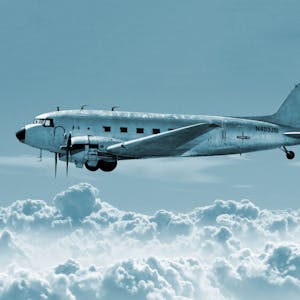This course, part of the "Fundamentals of Flight Mechanics" specialization, delves into the intricacies of atmosphere physics and its effects on flight instrumentation. Through engaging modules, students gain a deep understanding of standard and actual atmosphere dynamics, altitude correction computations, and the operation of critical aircraft instruments such as altimeters and airspeed indicators.
Key learning points include:
This course is ideal for aviation enthusiasts, aspiring pilots, and aerospace engineering students seeking to enhance their knowledge of flight mechanics.
Certificate Available ✔
Get Started / More Info
This course comprises modules covering atmospheric physics, aerodynamic forces, and practical applications such as the Zp, Mach, Vc Diagram. Learners will master the essential concepts of flight mechanics and instrumentation.
Module 1 delves into atmospheric physics, hydrostatic equilibrium, and the design of standard vs actual atmosphere. Learners will gain insights into altitude correction computations and the functioning of altimeters and airspeed indicators. The module includes engaging case studies, exercises, and quizzes to reinforce learning.
Module 2 explores aerodynamic forces, anemometer speeds, and the functioning of the Badin anemometer. Learners will engage in discussions and quizzes to consolidate their understanding of aerodynamic forces modeling and its impact on flight mechanics.
Module 3 focuses on practical applications, covering the Zp, Mach, Vc Diagram. This module equips learners with the skills to apply theoretical concepts to real-world flight scenarios, enhancing their ability to interpret flight instruments accurately.
Module 4 offers a comprehensive assessment of the course, allowing learners to review and consolidate their understanding of atmosphere physics and its impact on flight instrumentation. This module provides a final evaluation of the knowledge gained throughout the course.
This advanced physics course focuses on magnetic fields and Faraday's law, providing a comprehensive understanding of electricity and magnetism through engaging...
This course delves into the physics of rotational motion and gravitation, providing a comprehensive understanding of mathematical laws and conservation principles...
This course delves into the intricacies of quantum mechanics, atomic physics, and quantum information, providing a comprehensive understanding of the quantum world...
This course delves into the intricacies of spacecraft relative motion control, covering kinematics and kinetics. It equips learners to describe and predict relative...